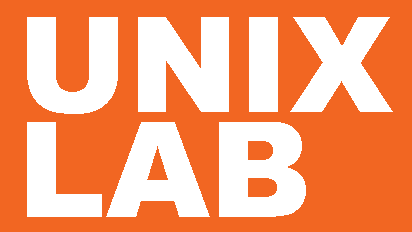Aspen Plus: Distillation Modeling
Course ID : EAP250
Duration In-class (в days) : 2 days
Duration Online : 2 days
Сurriculum : in-class, Virtual Instructor-Led Training - ONLINE
Price : $1 290
Overview
Build, improve and optimize steady state distillation models using Aspen Plus RadFrac block. Explore the rate-based modeling and the capabilities of RadFrac to model CO2 capture processes to meet sustainabilitygoals when required. Utilize Aspen Properties analyses to synthesize the best separation synthesis to achieve the desired separation tasks. Practice using complex features in distillation processes including, azeotropic, three phase and reactive distillation as well as columns with features such as pumparounds, side draws, multiple condensers, etc. using Aspen Plus. Review troubleshooting tips and how to enhance convergence and evaluate model quality.
Audience for this course
Engineers familiar with Aspen Plus with some experience simulating distillation processes who wish to improve their ability to simulate more difficult distillation processes.
Objective
- Gain the skills and knowledge to model complex distillation processes
- Reduce process design time by using advanced features of RadFrac
- Determine separation schemes using conceptual design tools
- Perform Tray Sizing/Rating and Packed Sizing/Rating calculations
- Apply Aspen Rate-Based Distillation to accurately model column with real trays and packing
- Use column analysis tools to optimize the feed location and number of stages and improve energy utilization
- Improve distillation model stability and accuracy
Prerequisites for this course
Must have attended the EAP101 Aspen Plus: Process Modeling training course or have previous experience in using Aspen Plus.
Outcomes
Course Benefits
• Gain the skills and knowledge to model complex distillation processes
• Reduce process design time by using advanced features of RadFrac
• Determine separation schemes using conceptual design tools
• Perform Tray Sizing/Rating and Packed Sizing/Rating calculations
• Apply Aspen Rate-Based Distillation to accurately model column with real trays and packing
• Use column analysis tools to optimize the feed location and number of stages and improve energy utilization
• Improve distillation model stability and accuracy
• Get an overview of sustainability processes to capture CO2 in which distillation models take place
Take a deep dive into distillation modeling. Learn how to handle complex distillation such as azeotropic, 3-phase, and reactive distillation, how to set up pumparounds, side draws, multiple condensers and how to optimize the feed location and number of stages. Learn how to perform Sizing/Rating of trayed and packed towers. Troubleshoot convergence issues.
Outline
-
Introduction to Distillation Synthesis and Conceptual Design
- Review and explain the Conceptual Design tools
- Discuss how to use Ternary Maps to analyze distillation sequences
- Workshop: Design a separation sequence using the Ternary Maps
-
Conceptual Design Block
- Identify and explain the Aspen Plus conceptual distillation design block, CONSEP
- Workshop: Ester separation from ether and alcohol
-
Distillation Using RadFrac
- Preview available multistage separation models in Aspen Plus
- Review the RadFrac model for single columns and functionality regarding Rating and Design
- Workshop: HCL column setup
-
Efficiency
- Review and explain the different types of efficiencies available in RadFrac
-
Sizing and Rating of Trays and Packing
- Review and explain Column Analysis for Sizing (Design) and Rating of trays and packing
- Workshop: Perform tray rating on an HCl column
-
NQ Curves
- Review how the NQ Curve feature can be used to optimize the feed stage location and the total number of stages of a distillation column
- Workshop: Use NQ Curves to optimize the feed stage location and number of stages for a hydrocarbon fractionation unit
-
Reporting Features
- Review and explain the following reporting features of the RadFrac block: Heat Curves, Pseudo Streams
-
Complex Configurations
- Learn how to model: zero flow in bottoms or distillate streams, pumparounds and bypasses, thermosiphon reboilers, and divided wall columns
- Workshop: C2 splitter with side heater
-
Reactive Distillation
- Review and explain how to model a reactive distillation column in Aspen Plus
- Workshop: Specify a reactive distillation case
-
Three Phase Distillation
- Review and explain how to model a distillation column where two liquid phases may be present on some or all stages
- Workshop: Model a methylchloroacetate column
-
Three Phase Distillation (Free and Dirty Water)
- Review and explain how to model a column that has two liquid phases, when one of the liquid phase is assumed to be pure water or mostly water
- Demonstrate how to model a quench tower that uses the free-water option
-
Rate-Based Distillation
- Review differences between equilibrium and rate-based distillation models
- Recognize the capabilities of Aspen Plus Rate-Based Distillation
- Workshop: Model a methanol-water distillation column using rate-based techniques
-
RadFrac Convergence and Troubleshooting
- Review the convergence algorithms used by RadFrac
- Explain the recommendations for selecting an appropriate convergence algorithm
- Review and explain common convergence problems
- Analyze how to troubleshoot and converge difficult columns
- Workshop: Apply troubleshooting techniques to converge a series of RadFrac models




